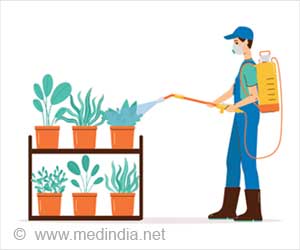Indian women have taken big steps in politics and the workforce but their health is still determined by class and caste, says a major study tracking their experiences over the last 30 years.
Food shortages and a declining government commitment to health care in the 1990s increased the "systemic inequities" for women throughout the country, said a copy of the report obtained by AFP.Positive developments such as longer female life expectancy are negated by the fact that a woman's health "depends on where she is born and lives, and what class and caste she belongs to," says the study.
The report, the first ever comprehensive review of the welfare of women at a national level, was prepared over four years as part of a joint project between the UN Development Programme and the Ministry of Women and Child Development. It used a landmark 1975 report on the status of women to measure changes and map their "intellectual and material contribution" to society.
Urvashi Butalia, the director of Zubaan books, which is publishing the report in January, told AFP that it "balances gains and losses" on issues such as globalisation that have had both negative and positive impacts on India.
Although globalisation has increased poverty for some, Butalia said it has also created jobs in the service sector for lower- and middle-class women who would otherwise be unable to find work.
While women who find success in politics may face a backlash, enforced quotas at a local level have propelled them to otherwise unreachable heights, said Butalia.
Advertisement
But in the areas of health and safety, Butalia said that "some things are indeed worse."
Advertisement
A government survey released last year said almost 40 percent of married women suffered physical or sexual abuse at the hands of their partners.
Many women in poor and rural areas also face barriers to reproductive rights and lack access to basic health care.
Women in urban areas live three years longer than those in rural areas, and infant and child mortality rates and maternal mortality rates remain "unconscionably high," the report states.
And despite awareness campaigns and laws banning sex-selective abortions, such "anti-female biases" are prevalent among educated members of society who are under pressure to have smaller families, states the study.
India has only 927 females for every 1,000 males - far lower than the worldwide average of 1,050 females - because of gender-specific abortions.
Males are traditionally seen as breadwinners in Indian society and are expected to take care of ageing parents later in life.
In 1994, India introduced tough laws against tests to determine foetal gender for non-medical reasons, but the rules are widely flouted.
The joint project's goal is to "improve the quality of life and promote gender equality," UNDP gender analyst Meenakshi Kathel told AFP.
The report suggests monitoring how legislation functions on the ground by giving women a "proactive" role in its implementation.
"An attempt has been made to try and bring in women from the time when they were seen as beneficiaries of welfare," said Butalia.
Source-AFP
SRM








